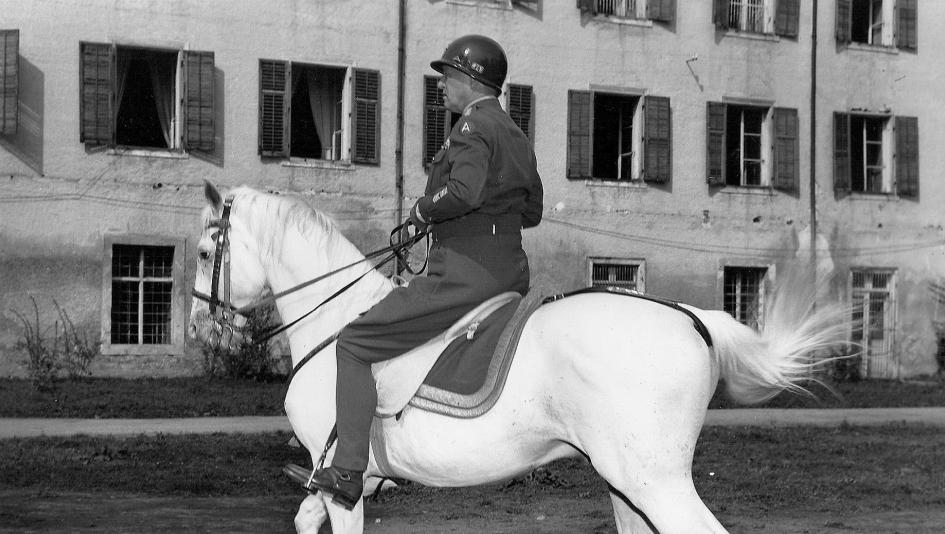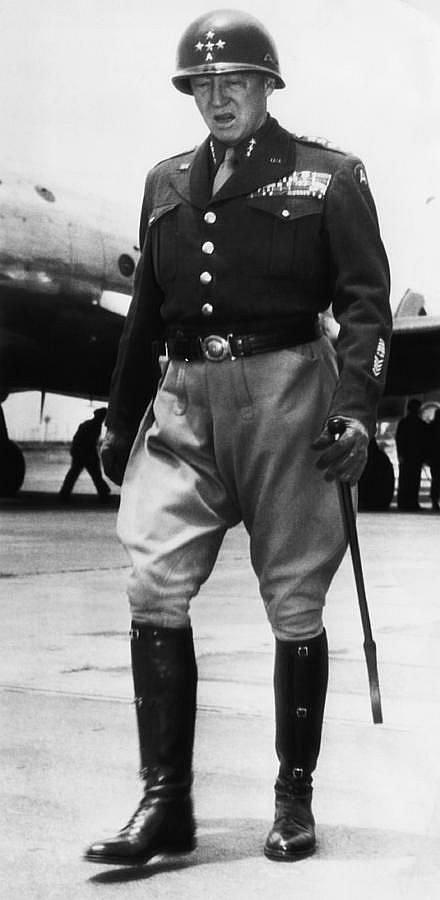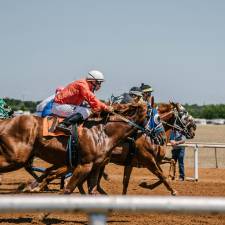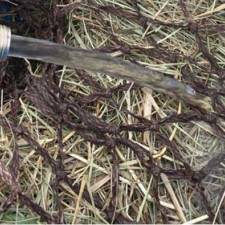
by J. Keeler Johnson
The letter was dated Aug. 29, 1919, and signed with a plain, unassuming signature. No mention was made of the writer’s rank as a colonel in the U.S. Army, or of his decorated service during World War I. To the contrary, on that day, the man who would eventually gain lasting fame as Gen. George S. Patton was unconcerned with his own status and more concerned with that of the five young Thoroughbreds he was seeking to register with The Jockey Club.
For the majority of Americans, Patton is most recognizable as a key commander of the U.S. Army throughout World War II, where he played a major role in leading troops to reclaim France and Germany. But among horse people, Patton is equally recognized for his lifelong love of equines. Besides playing polo, Patton spent much of his military career in the cavalry branch of the U.S. Army and played a key role in the famous rescue of the Lipizzaner breed during World War II, an event detailed in the bestselling book “The Perfect Horse” by Elizabeth Letts and featured in the 1963 Walt Disney film “Miracle of the White Stallions.”
Patton’s love for horses literally extended to the end of his life. When the general fractured his spine in an ultimately fatal car collision at the end of 1945, “The Perfect Horse” details that Patton’s initial concern was whether he would recover sufficiently to ride again. When he passed away less than two weeks later, his funeral honored him with a ceremonial riderless horse carrying Patton’s saddle and boots.
But nearly two decades before World War II broke out, Patton’s letter to The Jockey Club suggests that his equine ambitions extended also to the breeding and racing of Thoroughbreds. Patton’s note began:
“I am enclosing a letter which I would like you to hand to the proper official of the Jockey Club. My idea is that you can tell them I am not a crook and that I really could not help my failure to register at the proper time. I would hate to have to pay the price for naming a horse after he is a year old if it can be avoided.”

Patton’s concerns stemmed from the fact that he had five horses to register, their birth dates ranging from November 29, 1917 to June 29, 1919. All were the progeny of Bouvard, a stallion whom Patton would ride to victory in a variety of army events during the ensuing years, including a jumping class at Camp Meade, where he was stationed. On that occasion, the July 29, 1920, edition of The Baltimore Sun noted that “Patton piloted Bouvard over the three jumps and both the horse and rider were vigorously applauded.”
It’s understandable why Patton was late in attempting to register his horses. After all, the first four had been born while Patton was in Europe for World War I, and he had returned to the United States just six months earlier after recuperating from a wound suffered during a battle near Cheppy, France. As described in the Feb. 10, 1919, edition of the New-York Tribune, “Patton displayed conspicuous courage, coolness, energy and intelligence in directing the advance of his brigade… Later he rallied a force of disorganized infantry and led it forward, behind the tanks under heavy machine-gun and artillery fire until he was wounded. Unable to advance further, Colonel Patton continued to direct the operations of his unit until all arrangements for turning over the command were completed.” For his actions, Patton was awarded a Distinguished Service Cross by Gen. John “Black Jack” Pershing.
As if to seal the deal on his request to the Jockey Club, Patton ended his letter by writing “I am very much pleased with my horses and will bring four of them east and perhaps pass the wire first some more,” implying that he hoped to race them at some point. Perhaps this was in reference to Patton’s success with the steeplechaser Wooltex, a full brother to the 1910 Kentucky Derby winner Donau. Wooltex carried Patton’s colors on numerous occasions through the early 1910s and even had Patton in the saddle on a few occasions, such as when finishing third in a June 13, 1913, steeplechase for Army officers held at Belmont Park.
Whether Patton’s request for a free pass was accepted or denied has been lost to history, but in any case, records suggest that at least four of his five horses were successfully registered. Fittingly, Patton chose to give them names of special significance. A chestnut colt out of the mare Halcyon Cotton became Cheppy. A chestnut filly out of Bouvard’s full sister Opie (remarkably close inbreeding!) shared the name of Patton’s young daughter, Ruth Ellen. Two chestnut fillies produced by Elgiva were bestowed with the names Varennes and Pannes, two French cities that saw significant action during World War I.
The racing records of these four horses are also unclear—either they never raced or they never distinguished themselves in racetrack combat the way their breeder did on the battlefield. But Varennes and Ruth Ellen did produce foals that made it to the races; both were bred to the consistent, capable, and sound runner Westwood, with Varennes foaling Pal Jose and Ruth Ellen producing Ridgewood, who won at least two races during his career.
“With sincere thanks for anything you may be able to do for me,” continued the letter, “I am …
“… Most sincerely …
“… G S Patton Jr.”
This article originally appeared in America's Best Racing and is published here with permission.
Find out more about all kinds of interesting stories and lifestyles in our section on Recreation & Lifestyles












